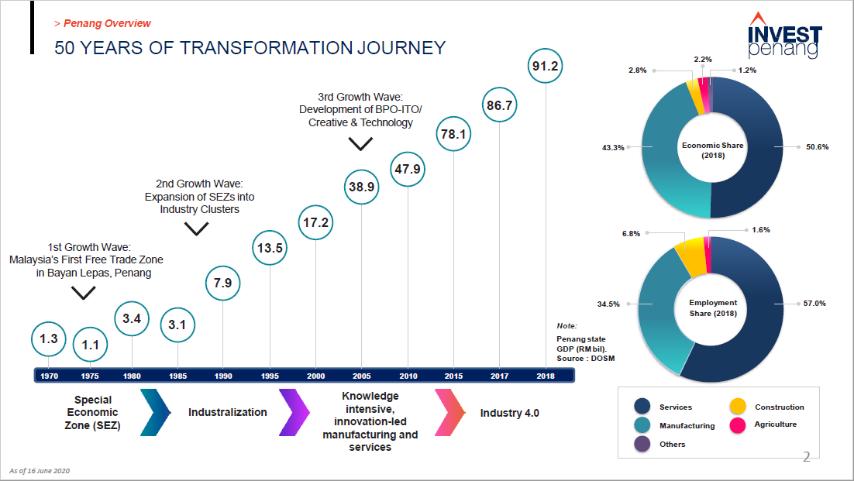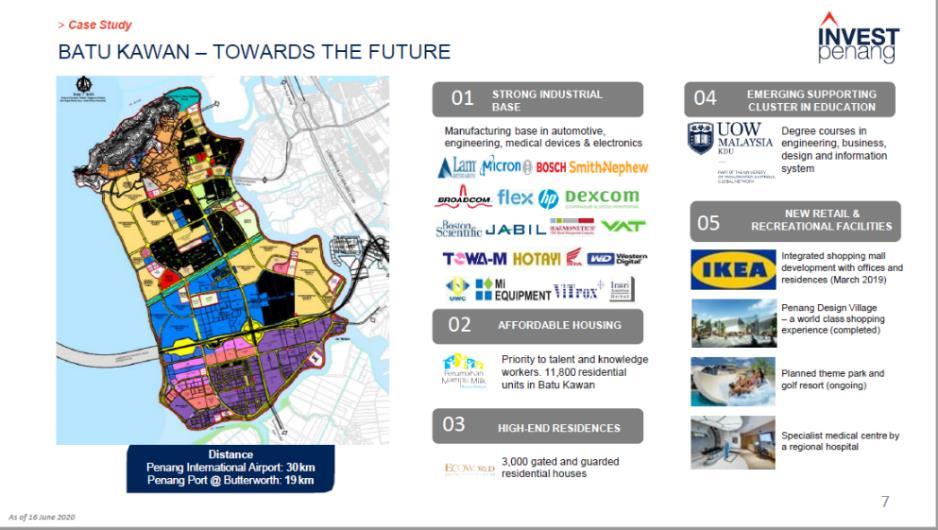
12 minute read
FORUMS
the communities for taking up water reuse schemes. This can demonstrate the potential for behaviour change in the communities. In addition, the connection of the above interactions with urban planning and household development needs to be investigated to identify the potential of these changes for future planning either through household retrofitting or new development of household construction projects. The identified commonalities and differences in multiple applications of these schemes can help decision makers better classify potential interventions and scenarios in the decisionmaking framework and share the successful knowledge and skills to develop potentially good alternatives for water reuse strategies. Within the policy-making perspective, a wide range of national policies, standards and regulations, regional and local resources and facilities affecting the case studies should be analysed. This will be combined with gaining knowledge in local communities by analysing the social, cultural, and religious behaviour for dealing with the existing challenges and barriers for taking up new water reuse technologies. Technological advancement in terms of affordable and low-tech water reuse equipment and strategy should be analysed to identify potential innovative and sustainable solutions fit for the purpose of holistically addressing the identified challenges and hence result in community resilience. All these requirements should also be justified through the improved performance of urban water systems and hence an integrated and holistic approach for system performance is required that quantify sustainability-based performance indicators when these technologies are placed within the urban water systems. Once all these components are established and embraced by all stakeholders and consumers, we should be able to see fast growth and uptake of these schemes in the communities.
References:
Advertisement
Behzadian, K. and Kapelan, Z., 2015. Modelling metabolismbased performance of an urban water system using WaterMet2. Resources, Conservation and Recycling, 99, pp.84-99. Vesey J 2016. Water Reuse: A Critical Step on the Path to a Secure Water Future, IWA publishing
IEM SECRETARIAT
Since graduation by Ir. Tan Eng Hock IEM Secretariat always is a place where occasionally must check in… It is not only a location for the registration of Continuous Professional Development activities But also a purposeful future pathway for all the Engineers in achieving their targeted accomplishments Where providing an agile platform to qualitatively improve and enhance their knowledge In my memory since the first day of career life IEM Secretariat was initially situated on the ground floor of a nostalgic Building at Macalister Road I gain my countless and precious factual information here I enjoy the ambience of the neighbourhood encompassing this building I can't recall when It was moved to the fifth floor of Ambank Building A place where you can attend seminars and other comprehensive activities comfortably A place where you can enjoy the vast sea view beside the busy life of surroundings By compromising some mutually agreed terms and conditions among IEM and Purchaser of our office IEM Secretariat was offered to move out to another permanent office A place call E-gate From Level 4 where it is located We still continue rejoicing the Penang Bridge sea view and the dazzled traffic flow to and fro between Island and mainland We still continue developing and contributing our learning to our nation selflessly IEM Secretariat A place with plenty of activities which you must actively involve and participate...
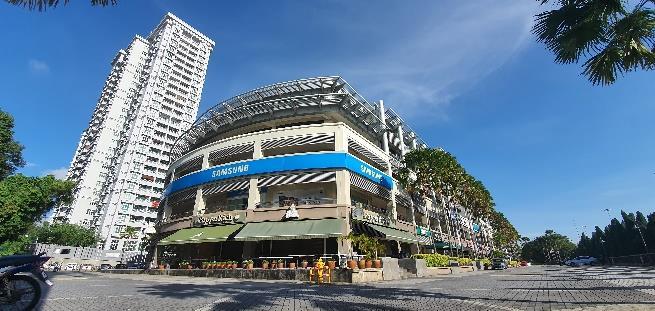
MODELING OF SLOPE STABILITY WITH SEISMIC & DYNAMIC EFFECTS AND THE RELATED GROUND ANCHORAGES
by Ir. Chua Beng Seong
BACKGROUND INFORMATION
This is a case study involving alteration to an existing slope and the effect on its stability taking into consideration the seismic and dynamic effects as per the client’s briefs.
The client purchased an adjacent empty plot of land with the intention to merge with the existing unit (with basement level) into one common pretentious villa. Due to the new brief requirement, the basement level for the new building will have to be recessed further into the existing slope by another 2.5m, thus altering the Factor of Safety (FS) for slope stability under the Limit Equilibrium to an unfavourable condition.
2.0 EXISTING GEOTECHNICAL PROFILE
Fig. 1.0 shows the existing slope profile where the slopes can be categorized into (a) Slope-1: 40-degree, (b) Slope-2: 30-degree and (c) Slope-3: 10-degree. Under the Hill Slope Classification for Design Purpose, Slopes-1, 2 & 3 are classified as Class 4A, Class 3A & Class 1 respectively.

Fig.1.0: Existing Slope Profile
For the purpose of slope modelling and analysis, the effective strength soil parameters from Mohr-Coulomb model (interpolated from the SI bore-Logs) are divided into 3 main profiles: Layer 1: Medium Stiff Sandy SILT: Ƴb= 18.0kN/m3, C’= 8.0kPa, θ’= 34°, SPT N/300=16 Layer 2: Stiff Sandy SILT: Ƴb= 19.0kN/m3, C’= 10.0kPa, θ’= 36°, SPT N/300=20 Layer 3: Very Stiff Sandy SILT: Ƴb= 20.0kN/m3, C’=18.0kPa, θ’= 45, SPT N/300>45
3.0 BASIS OF MODELING & DESIGN
a. Slope stability and strengthening analysis shall be modelled via the numerical modelling software “Geo-Slope/W”; b. Bishop’s simplified factor of safety method shall be adopted based on normal interslice forces, but ignore interslice shear forces. c. The seismic load due to the Peak Ground Acceleration, PGA = 0.08g for the KL zone shall be adopted to MS EN1998-1:2015 (National Annex: 2017 Table N.A.1) & EC8-Part 1/ EN1998-1: 2004; d. Strengthening of slopes via bored-and-grouted soil nails /Type A (Equivalent) Ground Anchorage shall be designed to BS8081:1989 (Ground Anchorages).
4.0 NEW BUILDING
For the design of the new building with the basement footprint now extending another 2.5m into the slope, the detailed staged construction sequence will have to be modelled and checked for both the temporary (local) and permanent (global) states. This article extracts and highlights only Stage 3 with seismic analysis results. Fig. 2.0 shows the new building modelled under Stage 3: Preparation of Retaining Wall and Foundation at Gridline 2 (New Recess Line). The local Factor of Safety (FS) for moment limit equilibrium is 1.06 (<1.20) which now falls below the required minimum FS margin. Fig. 3.0 shows the global Factor of Safety (FS) for moment limit equilibrium has now lowered to 1.29 (<1.40) which also falls below the required minimum FS margin. Slope strengthening is therefore required.
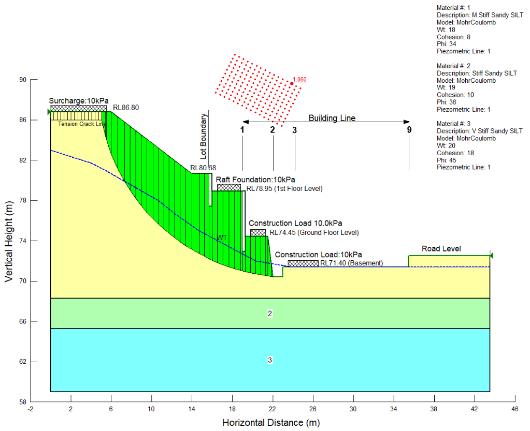
Fig. 2.0: Local Analysis
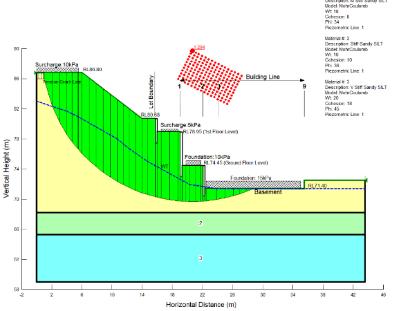
Fig. 3.0: Global Analysis
5.0 SEISMIC & DYNAMIC STABILITY
Fig. 4.0 shows the new building modelled under Stage 3: Completion of Retaining Wall and Foundation at Gridline 2 (New Recess Line) with the introduction of Soil Nailings SN#1, SN#2 & SN#3. The Global Factor of Safety (FS) for moment limit equilibrium with the soil nails fully mobilized, has now increased from 1.29 to 1.56 (>1.40). Fig. 5.0 shows the Seismic Pseudo-static Analysis to PGA=0.08g. The Global Factor of Safety (FS) for moment limit equilibrium has now lowered from 1.56 to 1.38 (>1.10) but still satisfies the required minimum FS margin.
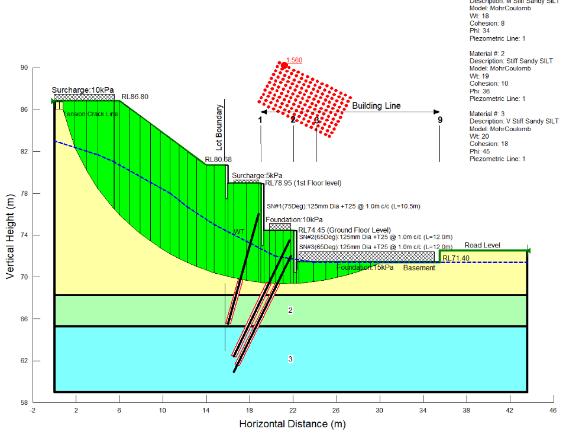
Fig. 4.0: Global Analysis with Soil Nails
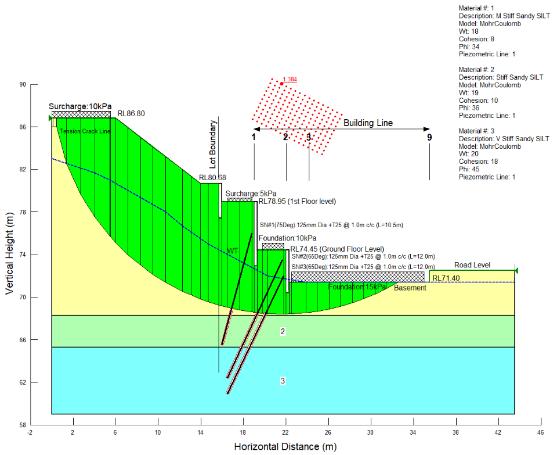
Fig. 5.0: Seismic Pseudo-Static Analysis with Soil Nails
6.0 PSEUDO-STATIC SEISMIC LIMIT EQUILIBRIUM
Dynamic effects of the slopes due to seismic loading can be considered in two ways, namely (a) Pseudo-Static analysis (b) Finite Element dynamic stresses with pore water pressure modelling. In this article only Pseudo-Static modelling will be presented. As in the case of Limit Equilibrium Fundamentals, a limit equilibrium formulation in Pseudo-Static analysis finds those forces acting on slice so that the slice is in force equilibrium and so that the factor of safety is the same for every slice. If a dynamic force is applied to a slice, the slice forces will be re-adjusted, which will include a re-adjustment of the base shear strength.
A Pseudo-Static analysis represents the effects of earthquake shaking by accelerations that create inertial forces. These forces act in the horizontal and vertical directions at the centroid of each slice. The design seismic inertia forces FH and FV acting on the ground mass, for the horizontal and vertical directions respectively shall be taken as:
EC8/EN 1998-5 :2004: Part 5
FH = 0.5 α ·S· W - Eqn. (4.1) FV = ±0.5FH if the ratio avg/ag is greater than 0.6 - Eqn. (4.2) FV = ±0.33FH if the ratio avg/ag is not greater than 0.6 Eqn. (4.3) where α is the ratio of the design ground acceleration on type A ground, ag, to the acceleration of gravity g; avg is the design ground acceleration in the vertical direction. ag is the design ground acceleration for type A ground. S is the soil parameter of EC8/EN 1998-1 :2004; - Cl. 3.2.2.2 W is the weight of the sliding mass. Additionally, a topographic amplification factor ST for ag shall be taken into account according to: - Cl. 4.1.3.2 (2)/ Annex A Therefore, based on MS EN1998-1:2015 (National Annex: 2017 Table N.A.1) and EC8-Part 5/ EN1998-5: 2004, ag = 0.08g (for KL Zone) α= 0.08 S = 1.4 (Ground Type B: Table N.A.1 of MS EN1998-1:2015) ST = 1.2
FH = 0.5 · α · S · ST · W = 0.5 · 0.08 ·1.4 · 1.2 W = 0.067W FV = ±0.33FH = 0.33 · 0.067 W = 0.022W
7.0 CONCLUDING REMARKS
The case study shows how the stability of the slope under seismic conditions can be effectively modelled using a similar concept of limit equilibrium fundamental. The case study shows that the stability of the slope under seismic consideration has resulted in a lower FS by 11.54%.
Due to space constraints, the following topics which have been left out, must be equally emphasized: • The Seepage effect during construction due to the water table that is higher than the basement. • The effect of Ground Deformation due to the strip foundation and seismic loadings. • The design of the facing plate which should be of sufficient size to ensure that local bearing capacity failure does not occur.
WOMEN ENGINEERS, LEADERSHIP FOR FUTURE
by Ir. Heng Lee Sun
“Leadership is about making others better as a result of your presence and making sure that impact lasts in your absence.” Quote from Sheryl Sandberg, the Chief Operating Officer (COO) of Facebook and the founder of LeanIn.Org. In 2012, she was named in the Time 100, an annual list of the most influential people in the world.
The visibility of female role models plays a significant role in inspiring other women to pursue similar careers, as
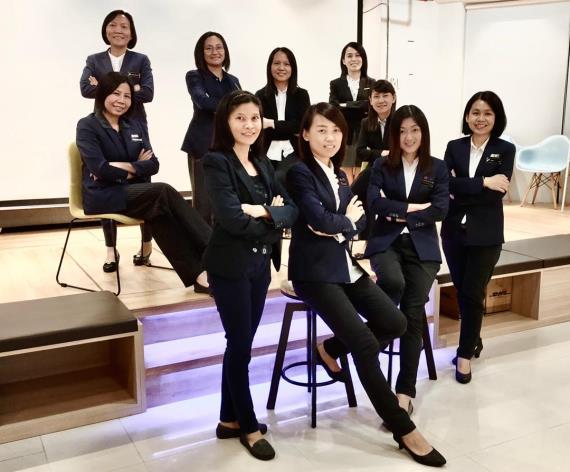
IEM Penang Branch WE Committee: Back row from left: Ir. Yeap NG, Ir. Lim SR, Ir. Ooi CH, Ir. Dr. Leo CP Middle row sitting left: Ir. Tean SN, sitting right: Ir. Tan YM Front row from left: Ms. Tan HS, Ir. Heng LS, Ir. Catherine Sim SP, Ir. Than SW. well as proving that success in this male-dominant industry is achievable. Everyone is facing a unique set of challenges in this world and being a woman in this industry sometimes has its difficulties. As professionals, women not only have to deal with double standards in businesses dominated by men, but they have to balance both work and home obligations. In fact, recent research from the World Economic Forum found that women work an hour more than men a day, when totalling paid and unpaid labour. As Women Engineer, while you cannot always change your industry, you can change your mind and learn the courage to lead and become the role model for younger women need.
Be Brave to define your personal ambition, purpose, and goals for. Be Determine for the decision to connect the challenges and to create the best idea for a solution. Be Resilient to manage relentless change in organisation and becoming invincible. Be Extraordinary to step up to lead, to step beyond the comfort zones, and to achieve a better future.
Embrace Change to shape the future, Women Engineers, WE Lead.
Ir. Heng Lee Sun is the current Vice Chairman of IEM Penang Branch
IEM Membership Updates (March 2020 to October 2020):
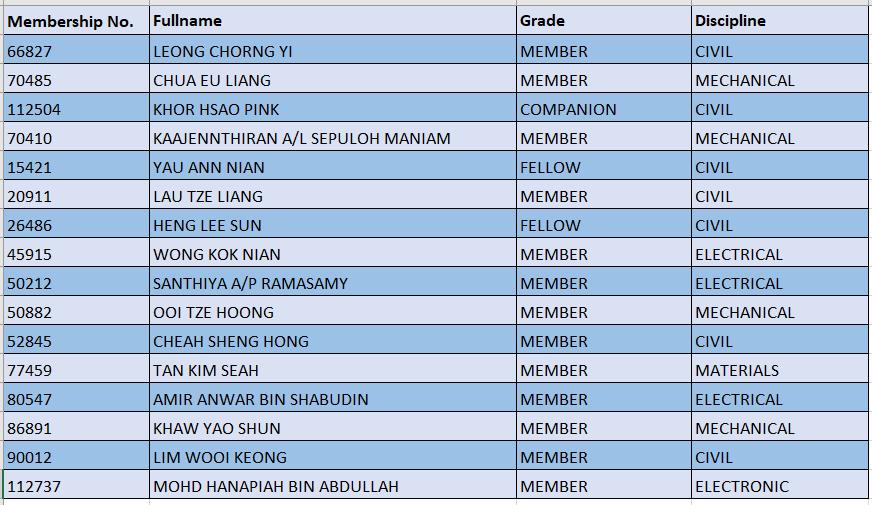
BUILDING WITH THE MOUNTAIN
Technical Talk by Dr. Peter A. Wyss

Reported by Ir. Bernard Lim
There are a lot of apprehensions when it comes to cliffs made from yellowish, moderate-to-thickly bedded building on slopes and mountainous terrain. In certain sandstone, interspersed with hits of interbedded dark-toplaces there are limitations and even prohibition for varied light grey shale and mudstone. reasons. So how will you be able to overcome such It is indeed an eye opener when the speaker shares his challenges? motto when implementing project, which is “thinking
We have our speaker, Dr Peter A. Wyss who grew up in beyond the obvious”. the highly mountainous country of Switzerland where he The talk was held at Bayview Hotel, Georgetown, Penang experienced building villages, and even part of on 9 May 2020 with well over 70 participants. It was well agglomerations of steep terrain received with lots of interaction between participants and have become the bread and butter speaker. The hall arrangement followed the SOP to ensure for the construction industry. social distancing.
Dr Peter Wyss was the chief planner of the Gunung Machinchang Masterplan and the designer of the iconic Langkawi cable card and Skybridge.
In this talk, Dr Wyss share with Dr. Wyss us some of the pertinent design and construction points when building on steep terrain, including sharing of movie clips on the Langkawi project. The Skybridge is located at the Machinchang Mountain. It is a difficult terrain.
The Machinchang Formation, found in the northwestern region of Langkawi, is a unique mountain environment dominated by barren rocky peaks and vertical
Langkawi Skybridge
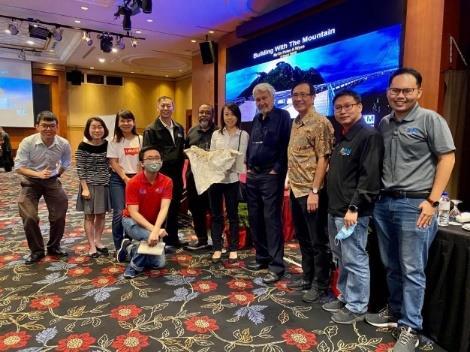
Some of the participants with the speaker Dr. Wyss (4th from right)
Ir. Bernard Lim is the current Vice Chairman of the IEM Penang Branch
URBAN PLANNING & INFRASTRUCTURES DEVELOPMENT
Where we were, now and heading to, from industrialization points of view & economically
Talk by Dato Seri Lee Kah Choon, City Bayview Hotel, Penang, 18 July 2020 Reported by Ir. Bernard Lim
We have the honour of having Dato’ Seri Lee Kah Choon, currently the Chairman of Malaysia Debt Ventures Bhd, Malaysia’s leading technology financier under the Ministry of Finance presenting a talk on urban planning & infrastructures development. Dato’ Seri is also the Special Investment Advisor to the Chief Ministry of Penang.
Penang’s industry success is the presence of robust ecosystem with proven track record to evolve and stay focused on the state-of-the-art manufacturing and technologies.
Over the 50 years Penang has been transform into one of the Asia’s manufacturing super hubs with over 300 multinational corporation, MNC. The arrival of 8 Samurai in 1970s has spawn the establishments of MNCs in Penang and it bodes well for the State’s manufacturing industry in moving up the value chain. Following such trajectory, the State is now a regional hub for E&E, equipment, and medical device industries. Concerted urban planning and accessible infrastructure are imperative in Penang’s transformation journey, alongside with the comprehensive
